Utah’s landscapes whisper tales from times gone by, where the rugged terrains bear testament to a vibrant tapestry of history.
From the foothills of Salt Lake City to the expansive southern deserts, remnants of old forts stand as silent sentinels to the past.
In this article, historic forts in Utah, we journey through these historic sites, unearthing stories of Native Americans, intrepid Mormon settlers, and the footprints of the United States military.
Join us as we traverse the captivating annals of Utah’s historic forts.
10 Historic Forts in Utah
| 1. Fort Douglas | 6. Fort Duchesne |
| 2. Fort Buenaventura | 7. Fort Cameron |
| 3. Cove Fort | 8. Fort Harmony |
| 4. Fort Utah | 9. Fort Pearce |
| 5. Fort Deseret | 10. Willden Fort |
1. Fort Douglas
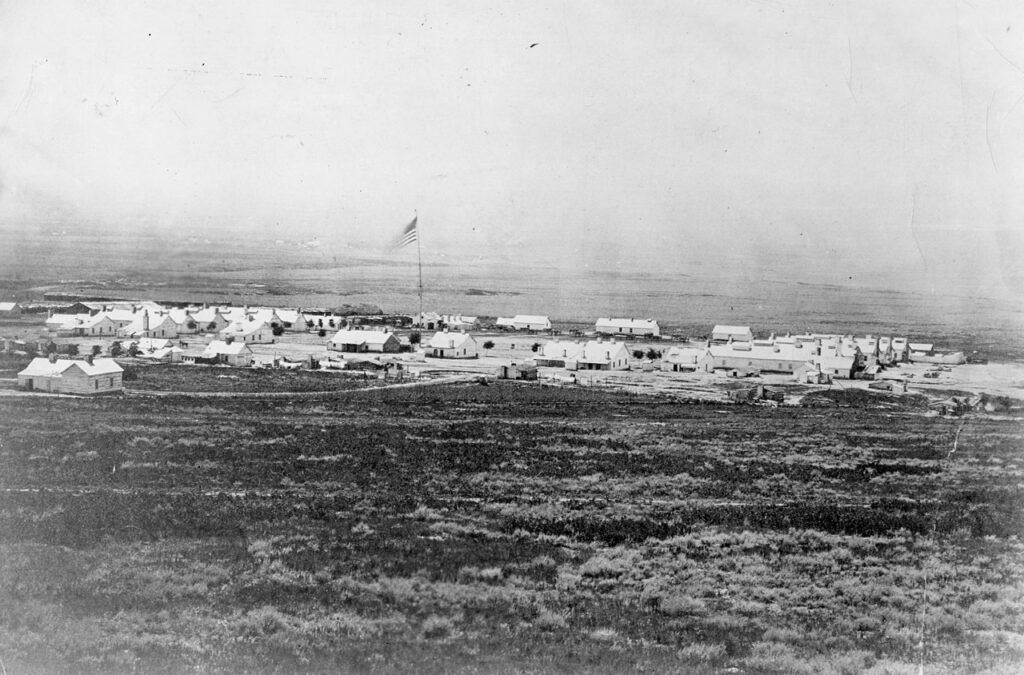
Located on Salt Lake City’s outskirts, Camp Douglas is a testament to the nation’s tumultuous Civil War era.
Initiated in 1862, this military encampment emerged as a critical defense and strategic point in the western territories, safeguarding key communication routes during national division and unrest.
Fort Douglas Military Museum: Where Past Meets Present
Today, the Fort Douglas Military Museum proudly resides on this historic site, preserving a wealth of artifacts, personal narratives, and important documents that chronicle the life and times of the soldiers once stationed here.
Its position on the grounds of the University of Utah offers a unique confluence of past and present, providing students and the broader community an opportunity to interact with a pivotal chapter in American history.
The World Wars: A Continued Legacy of Service
The significance of Camp Douglas extends beyond the Civil War. As the tides of the 20th century brought new conflicts, the camp remained a central point of military coordination.
The parade ground, a vast expanse once reverberating with the sounds of marching troops and military exercises, symbolized the fort’s continued importance. Similarly, the telegraph office stood as a beacon of communication, facilitating the rapid exchange of crucial wartime messages during the World Wars.
National Recognition: A Living Monument
Recognizing its enduring importance and pivotal role in shaping national events, Camp Douglas proudly finds its name on the National Register of Historic Places.
It is a relic of ancient times and a living monument to the strategic foresight, sacrifices, and military prowess that defined its era.
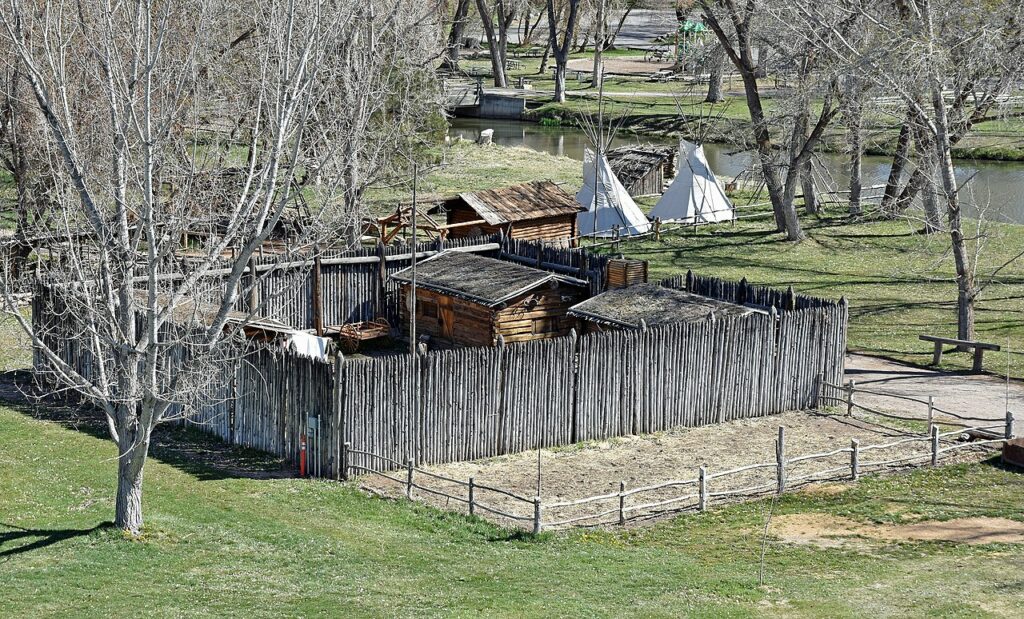
Lying in what is now modern-day Ogden, Utah, Fort Buenaventura is a relic of the ambitious westward expansion and the insatiable spirit of exploration. Unlike many forts conceived out of conflict, Fort Buenaventura was rooted in the ideals of discovery, trade, and establishing new frontiers.
A Trading Post Emerges
Established by the intrepid trapper Miles Goodyear in the 1840s, Fort Buenaventura was initially envisioned as a trading post. The site was meticulously chosen and positioned near river pathways, making it a magnet for trappers, traders, and indigenous tribes. Its establishment marked one of the earliest non-indigenous settlements in the Utah region.
Interactions and Exchanges
Fort Buenaventura quickly became a melting pot of cultures. Indigenous tribes, mountain men, and later settlers found common ground within its confines.
It wasn’t just goods exchanged; stories, skills, and knowledge intermingled, shaping the region’s narrative. The fort facilitated commerce and a rich tapestry of interactions that would define the area’s legacy.
Transition and Legacy
The strategic importance of Fort Buenaventura didn’t go unnoticed. By the late 1840s, the Mormon settlers acquired the fort and its surrounding lands led by Brigham Young. The transition marked a new chapter in the fort’s history, transitioning from a trade hub to a more organized settlement.
Today, Fort Buenaventura is a testament to the pioneering spirit of the early explorers and the relentless drive of those who sought to chart the uncharted.
Its legacy is not just in its wooden palisades and structures but in the stories, exchanges, and interactions that it facilitated. A visit to the fort is a journey back in time, offering a glimpse into the adventurous soul of the American West.
3. Cove Fort

Cove Fort is a testament to the vision of two influential figures: Ira Hinckley and President Brigham Young. With the ever-growing expansion of the American West, communication avenues like telegraph lines and mail routes became lifelines for settlers.
Understanding the need to protect these vital lines, President Young commissioned Ira Hinckley to construct a fort to ensure their safety.
Architectural Prowess: The Mud Wall Defense
Uniquely constructed, Cove Fort boasts mud walls spanning significant square footage. This wasn’t just an architectural choice but a strategic one. The robust mud walls of the fort served as an impenetrable barrier, providing much-needed shelter for the settlers against potential Indian attacks.
The fort became a haven in times of uncertainty, ensuring the safety of both people and the crucial communication lines they relied upon.
The Historic Cove Fort Complex: A Glimpse into the Past
Today, visitors can step back in time when they explore the historic Cove Fort complex.
The site is a treasure trove of history, from the old bishop’s quarters, which give insights into the administrative and spiritual aspects of the period, to the blacksmith shop, which echoes the sounds of metal and fire, crucial for daily life and repairs. These structures connect to the lives and activities of those who once called Cove Fort home.
The Legacy of the Hinckley Family
Beyond its brick-and-mortar, Cove Fort is deeply intertwined with the legacy of the Hinckley family. Over the years, they played an instrumental role in its maintenance, ensuring its walls stood strong and its history was preserved.
Among them, Gordon B. Hinckley stands out. As a notable figure from the Church of Jesus Christ of Latter-day Saints, his connection to the fort adds a spiritual significance, intertwining faith with the fort’s historical narrative.
In the vast chronicles of the American West, Cove Fort shines brightly, reflecting the collaborative efforts of visionaries, architects, and dedicated families who ensured its legacy would stand the test of time.
4. Fort Utah
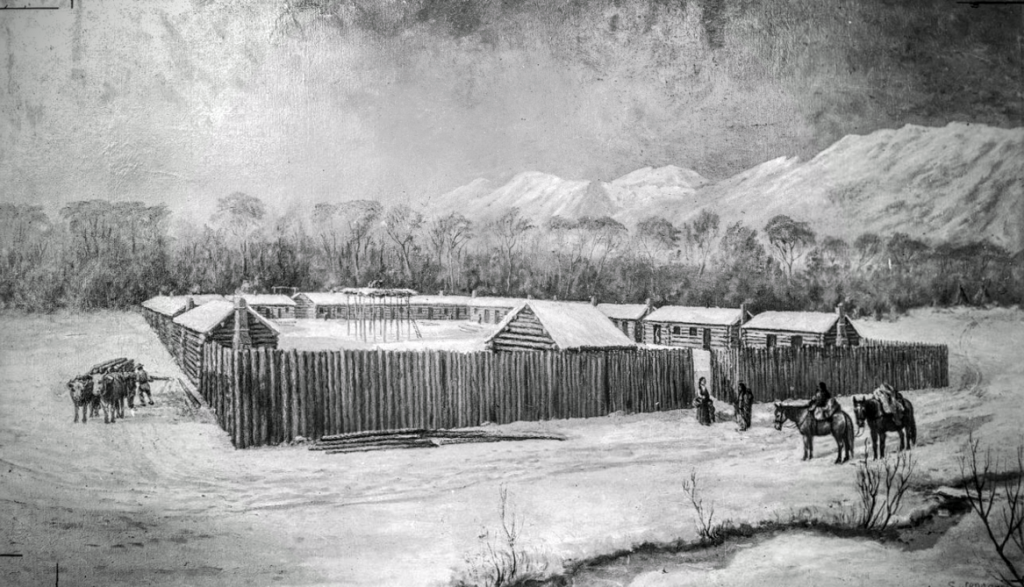
Standing near the serene shores of Utah Lake, Fort Utah holds a place of significance in the annals of American westward expansion. As the first foothold for white settlers in the vast expanse of the Utah Valley, it stands as a symbol of pioneering spirit and determination.
A Lost Relic of History
While Fort Utah played an undeniably crucial role as the original settlement, the sands of time have, unfortunately, obscured its exact location.
The fort, which once teemed with settlers’ daily life—sounds of children playing, livestock, and the daily hustle and bustle—has now faded into history. Its precise footprint, where stories of hope, dreams, and challenges unfolded, remains elusive to modern explorers.
A Beacon of Memory: The Historical Marker
Despite its physical absence, the legacy of Fort Utah is far from forgotten. A historical marker stands as a sentinel to its memory, guiding visitors and history enthusiasts to the general vicinity where the fort once stood.
While it might not offer a tangible connection, this marker serves as a poignant reminder of the fort’s historical significance, ensuring its story remains alive in the collective consciousness.
With its tales of early settlement, challenges, and triumphs, Fort Utah continues to inspire, reminding us of the indomitable spirit of those who ventured into the unknown to carve out a new life in the Utah Valley.
5. Fort Deseret

Constructed amid the tumultuous Black Hawk War, Fort Deseret is a silent witness to the conflicts and challenges that marked the era. Explicitly designed as a bulwark against potential threats, its primary purpose was to shield the settlers from skirmishes with the Ute Indians.
Architectural Marvel: The Mud Wall Defense
One of Fort Deseret’s most distinctive features is its imposing mud wall, prominently stretching across its west ends. This was not just an architectural marvel but also a pragmatic choice.
Mud, a readily available resource, was molded to form a formidable barrier, ensuring the fortifications were robust and efficient. This wall was critical in defending the fort’s inhabitants during tension and uncertainty.
Guided by Vision and Need
The design and construction of Fort Deseret bear the distinct influence of President Brigham Young. His guidance in its creation was not just a reflection of his leadership but also underscored the importance he placed on ensuring the safety and security of the original settlers.
At a time when “Indian problems” were a pressing concern, the fort served as both a sanctuary and a stronghold, allowing settlers to continue their daily lives with some semblance of peace and security.
Fort Deseret symbolizes resilience and determination with its mud walls and storied history. It is a testament to the spirit of the early settlers who, despite facing immense challenges, persevered in their quest to establish a new life in a new land.
Related: 10 Historic Forts in Texas
6. Fort Duchesne
In the vast landscape where governmental authority and the sovereignty of Native American tribes intersected, Fort Duchesne stood as a beacon of stability. Established by the federal government, its primary purpose wasn’t just to be another military outpost but to serve as a linchpin in the intricate dance of diplomacy, monitoring, and peacekeeping.
A Vital Nexus of Relations
At its core, Fort Duchesne played a critical role in overseeing affairs with various Native American tribes. In a period when the relationships between the federal government and these tribes were often tenuous, the fort served as a bridge, fostering dialogue, understanding, and cooperation.
Its presence was a constant reminder of the government’s commitment to ensuring peace and stability in the region.
More than Just a Military Post
While its origins were decidedly military, Fort Duchesne transcended its initial design. It wasn’t merely a stronghold bristling with weaponry and troops.
Instead, it became a hub where negotiations were held, treaties were brokered, and mutual respect was fostered. Its walls witnessed countless meetings, conversations, and exchanges that shaped relations between the federal government and the Native American tribes.
Fort Duchesne’s legacy isn’t just in its bricks and mortar but as a mediator, ensuring that the balance between governance and tribal rights remained equitable. It is a testament to the federal government’s efforts to ensure a harmonious coexistence in a dynamically changing American frontier.
7. Fort Cameron
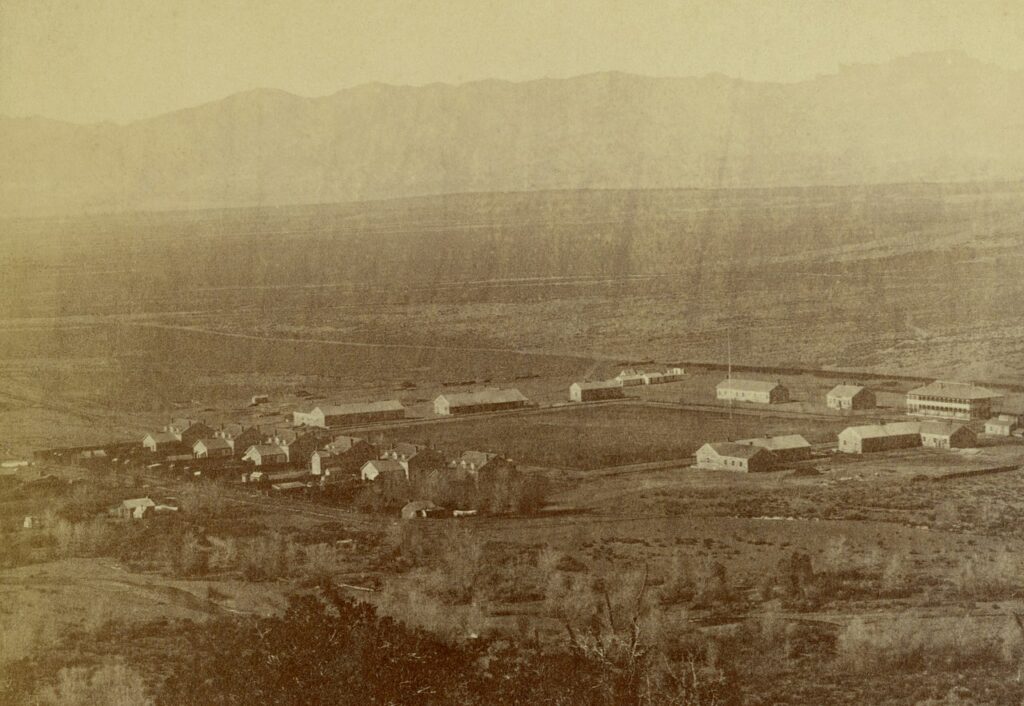
The Mormons often found themselves at odds with their unique religious practices and communal lifestyle with federal regulations and mandates. As the discord grew, there was a palpable need for an official presence, leading to the creation of Fort Cameron.
A Brief Military Stint
Despite its establishment as a symbol of federal oversight and peacekeeping entity, Fort Cameron’s time as a military outpost was fleeting. By 1883, the military abandoned it a mere eleven years after its inception.
This decision was influenced by multiple factors, including changing political climates, the cost of upkeep, and a perceived reduction in the region’s need for such a stronghold.
Rebirth as a Beacon of Learning
The tale of Fort Cameron, however, did not end with its military abandonment. Recognizing the potential of the infrastructure, local communities turned their eyes toward a more constructive and community-centric use for the site.
The fort transformed, shedding its image of a symbol of contention to become a beacon of education. The barracks that once housed soldiers now welcomed students, and the parade grounds that echoed with military drills became hubs of academic and recreational activities.
8. Fort Harmony
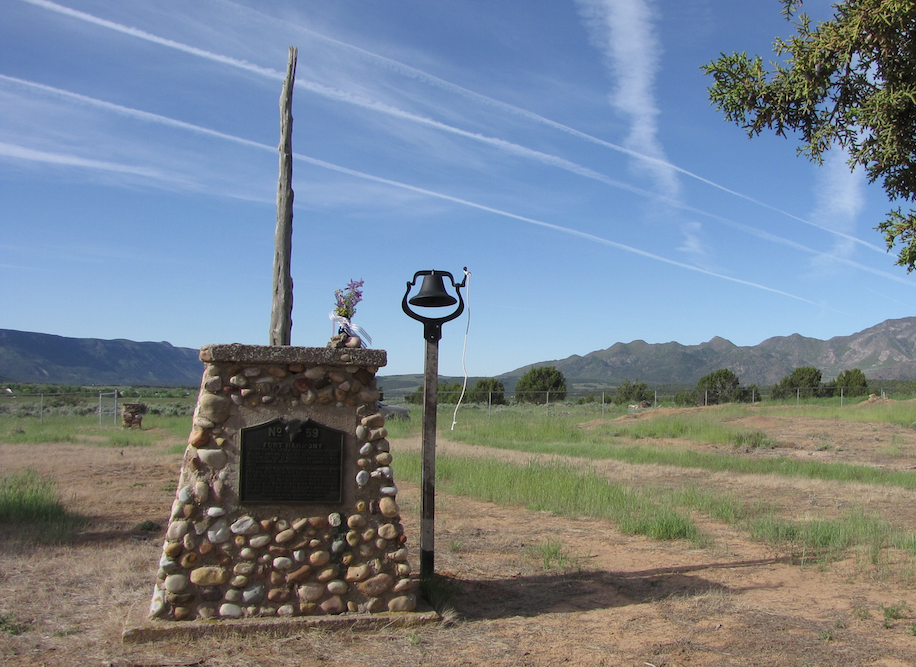
Fort Harmony emerged in the 1850s as a symbol of pioneering spirit and determination in the rugged terrains of southern Utah. Established by the ever-resilient Mormon settlers, this fort wasn’t just another outpost; it was envisioned as a new beginning, a nexus of community, faith, and commerce in an otherwise challenging environment.
John D. Lee: A Pillar of Fort Harmony’s Inception
Central to the story of Fort Harmony is John D. Lee, an influential figure within the early Mormon community. His leadership, vision, and unwavering commitment played an instrumental role in the fort’s establishment.
Under his guidance, what might have been just another remote settlement became an essential hub for settlers. Lee’s influence is evident in the strategic planning of the fort, ensuring it served not just as a haven but also as a bustling center of trade and commerce.
The Pinnacle of Prosperity and an Abrupt End
As years rolled on, Fort Harmony burgeoned, becoming synonymous with growth and prosperity in southern Utah. The fort’s walls witnessed the comings and goings of traders, settlers seeking new opportunities, and the everyday life of a thriving community.
But nature, in its unpredictable might, had other plans. A devastating flood wreaked havoc on the settlement, destroying a significant portion of its infrastructure. This natural calamity signaled the beginning of the end for Fort Harmony, leading to its eventual abandonment.
9. Fort Pearce
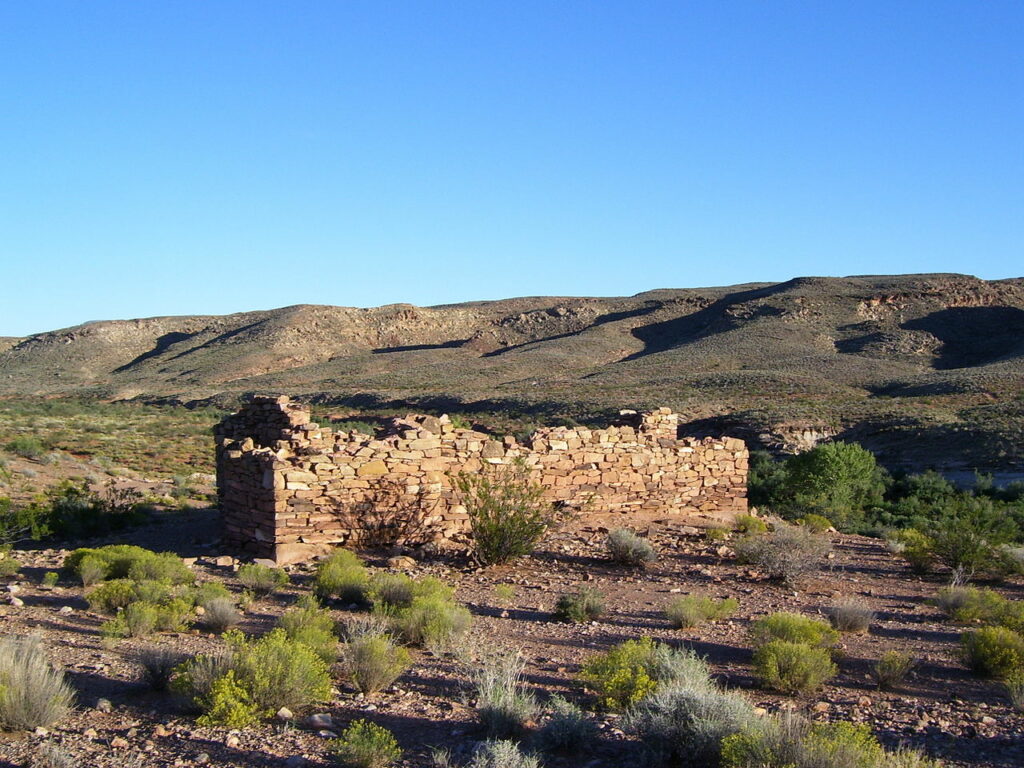
Perched in the vast expanse of southern Utah, Fort Pearce stands as a poignant reminder of a bygone era.
Constructed during a tumultuous period, its walls bore witness to the intricate dance of conflict and cooperation between settlers and the surrounding native tribes.
Its establishment wasn’t merely out of the need for a military post but as a protective shield against potential threats and incursions.
Strategically Positioned
Fort Pearce’s location was no accident. Positioned strategically, it served as a crucial point of oversight and control. In a time when the boundaries between territories were fluid, and the relationships between settlers and Native American tribes were often marked by suspicion and tension, Fort Pearce provided a semblance of stability and order.
More Than Just Fortifications
Beyond its military significance, Fort Pearce emerged as a linchpin in the intricate communications and trade routes network. Ensuring the safety of travelers, traders, and mail deliveries, its influence stretched beyond its walls. It was not just a symbol of defense, but a beacon of hope, signaling safety and security in an otherwise unpredictable frontier.
A Legacy Etched in Stone
While the bustling activities that once characterized Fort Pearce have long ceased, its legacy endures. Today, its weathered walls and remnants are more than just historical artifacts; they narrate tales of bravery, resilience, and the undying human spirit to forge ahead, even in the face of adversity.
Fort Pearce stands as a testament to a chapter of history where courage, strategy, and diplomacy played out against the backdrop of the vast Utah landscape.
10. Willden Fort
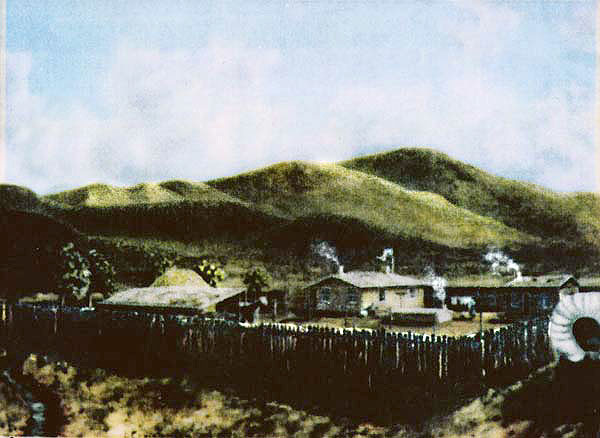
In the shadow of the looming Black Hawk War, Willden Fort emerged not as a monument to aggression but as a sanctuary for settlers seeking protection.
Amid the rugged landscapes and the palpable tensions with native tribes, this fort symbolized the resilience and determination of the local communities to carve out life amidst uncertainty.
Log Cabins: A Symbol of Fortitude
Distinctively constructed primarily of log cabins, Willden Fort was less about grandeur and more about practicality. Each timber, meticulously cut and placed, told a story of the community’s commitment to safeguarding their loved ones.
The very fabric of the fort echoed with tales of families seeking solace within its protective embrace, finding refuge from the external threats that characterized the era.
A Crucial Protective Haven
Beyond its wooden walls, Willden Fort played a pivotal role during the Black Hawk War. While it might not have been the site of major battles, its mere presence offered solace to local settlers. The fort’s establishment was a clear message: in times of conflict and uncertainty, the community would come together, fortify, and protect.
Legacy of Resilience and Unity
Though time has marched on and the urgency of the Black Hawk War has faded into the annals of history, the legacy of Willden Fort remains intact.
Today, it stands as a testament to the strength of unity, the importance of community, and the indomitable spirit of the people who, despite facing overwhelming odds, chose to stand firm, build, and persevere.
Willden Fort, in its silent majesty, continues to remind us of the power of collaboration and the enduring human spirit to thrive amidst adversity.
Related: 10 Historic Forts in Vermont
Conclusion – Historic Forts in Utah
Once a land of uncertainty and frontier battles, Utah became a beacon of settlement and growth. Places like the Fort Douglas Military Museum or the Daughters of Utah Pioneers stone monuments help preserve this rich history.
From forts that acted as trading posts like Fort Buenaventura to those built in response to local settler and Native American conflicts like Fort Cameron, each tells a unique story. This tale is woven with figures like Ira Hinckley, organizations like the LDS Church, and events like the Civil War, painting a vibrant picture of Utah’s historical tapestry.

Cory is a website owner and content creator who enjoys fishing, history, coin collecting, and sports, among other hobbies. He is a husband and father of four.
Romans 15:4 For whatever was written in former days was written for our instruction, that through endurance and through the encouragement of the Scriptures we might have hope.

